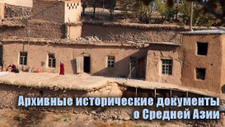Вы здесь
History of Burana Minaret and Tower.
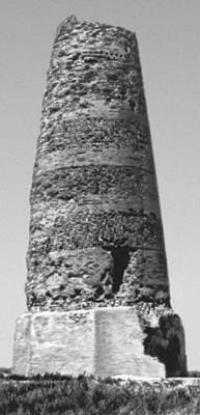
Burana Tower in Kyrgyzstan.
"There is not a single resident of the Chui Valley who would not know that not far from the city of Tokmak there is a "tower" called the Burana Tower. This name belongs to the majestic minaret built about 900 years ago. The name "Burana" most likely comes from the incorrectly pronounced word "monara", i.e. minaret. A minaret is an obligatory attribute of a mosque; it is a tower from which the muezzin (azanchi) called Muslims to the next prayer. Many years have passed since the Burana Minaret was built; the people forgot what it served for, the mosque next to the minaret fell apart, and the minaret began to be perceived either as a watchtower or as part of a castle, where a powerful khan once hid his daughter from the eyes of people who wanted to take her as a wife."
Architectural monuments of Kyrgyzstan. Burana Tower - a minaret of XI th century. A.N. Bernshtam. 1950.
Sights of Burana Tower architectural and archaeological complex.
Of the medieval written sources where the Burana minaret is first mentioned, the most famous is the work of Muhammad Haidar "Tari-hi Rashidi", which describes the city of Monara. The fact that the city of Monara mentioned by Muhammad Haidar refers to Balasagun or the Burana minaret was once proven by the Russian scientist and consul in Kashgar N.F. Petrovsky.
"Monara" is translated from Arabic as "minaret". There is no other similar tower structure in the Chui Valley, which Muhammad Haidar writes about. The first mentions by Europeans in the 60s of the XIXth century, in which the minaret was called Monara, are mentioned in the "Notes of the Russian Geographical Society".
The first image of the Buran minaret was made by the artist Uspensky, a participant in the Kokand campaign. His album depicts a "small minaret". Some information about the monument, as well as a drawing of the minaret, were reported at the IV Archaeological Congress of Russia in Kazan in 1877.
The minaret and the adjacent settlement have been studied since the second half of the 19th century by a number of enthusiasts and local historians (V. D. Gorodetsky, N. N. Pantusov, F. V. Poyarkov, V. P. Rovnyagin, A. M. Fetisov). The most significant role in its study during that period was made by the famous orientalist V. V. Bartold.
After his trip to Central Asia in 1893 - 1894, the Burana minaret became the object of detailed scientific research by this scientist. V. V. Bartold was the first to correctly determine the purpose of the tower as a minaret and dated it to the Karakhanid period, which became very important in the subsequent study of the monument.
A description of the Burana minaret was left by the teacher of the Tokmak school V. P. Rovnyagin, in which, however, he does not determine the purpose of the tower. In a message at a meeting of the Turkestan circle of archeology lovers, he also suggested that the Burana and Ak-Beshim settlements are the ruins of one large city.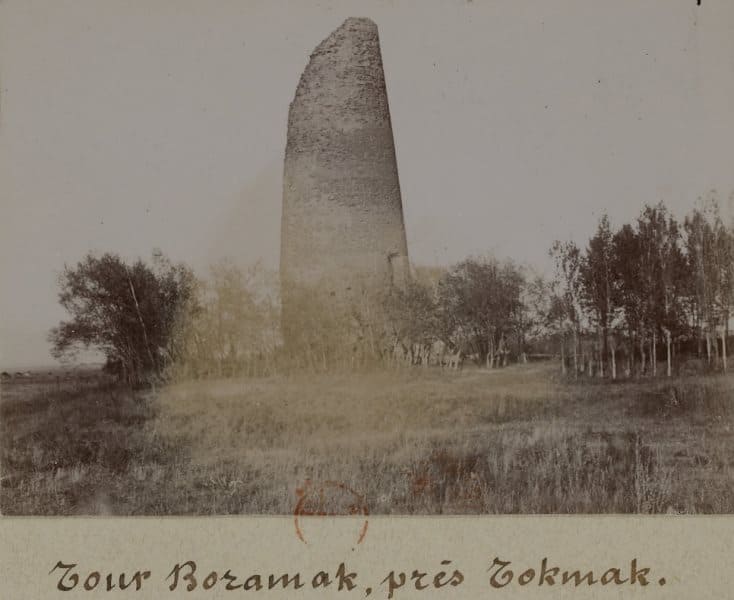
The Burana settlement, as well as the minaret itself, has attracted the attention of archaeologists from the very beginning, since they are connected, like other objects of the settlement, with each other. However, in the pre-revolutionary period, no serious measures were recorded to preserve the minaret, and it was already in a critical condition.
Only in 1927 - 1928, based on decisions of the government of the Kirghiz ASSR, the minaret was repaired and preserved for the first time. The monument was removed from a dangerous state, and the attention of the general scientific community was drawn to it.
During the 1930s, numerous publications about the minaret appeared, excursion groups began to be brought to it, and it also became a place for detailed scientific research. In 1927, the Burana minaret was explored by the expedition of M.E. Masson, who concluded that the minaret was built in the first half of the XIth century (a date that was accepted by most researchers of this site).
In 1929, the expedition of A.I. Terenozhkin conducted archaeological research at the settlement (excavations were carried out, rich archaeological material was collected, detailed drawings of the excavation site were made and numerous drawings were made).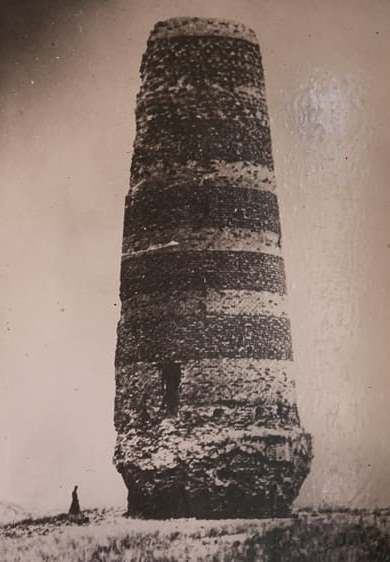
In 1938, research of the minaret and the settlement was carried out by A.N. Bernshtam, who headed the Semirechye archaeological expedition. The scientific results of this expedition were published in several works by Bernshtam. In his book "Architectural Monuments of Kyrgyzstan" he dwells in detail on the architecture of the minaret. A.N. Bernshtam was the first to notice that the architectural decor of the minaret's ornamental belts was made of the same bricks that the entire minaret was built of.
He calls the pattern of the ornamental masonry "textile". He compares the technique of laying the minaret's ornamental belts with the ornamental masonry of the Ismail Samani Mausoleum, the Kalyan Minaret in Bukhara, the Vabkent Minaret and the Middle Uzgen Mausoleum, the construction of which he estimates to be the XIth century.
The next period of active research of the minaret and its surrounding area dates back to 1953 - 1954. As a result of the research, the archaeological expedition led by P.N. Kozhemyako managed to reveal a detailed layout of the settlement, establish that its total area was 25 - 30 square kilometers, and the city ramparts were recorded. P.N. Kozhemyako noted that "The settlement has a complex layout and includes central ruins, represented by a quadrangular fortress, and a huge rabad area within the outer city ramparts.
This territory constituted the main part of the city, where residential and commercial buildings of the townspeople and their land plots, numerous craft workshops, bazaars, etc. were located. This territory was protected by a double ring of fortress walls.
Thus, the length of the outer wall along the circumference reached 15 kilometers. A topographic survey of the central ruins of the Burana settlement together with the minaret was carried out by A.I. Terenozhkin in 1929 and B.I. Zima in 1937. Thus, as a result of archaeological research not only of the central ruins of ancient Balasagun, but also within the boundaries of the long city ramparts, it was possible to prove the localization of the Burana minaret and the city of Balasagun with its modern location.
However, archaeological data only confirm the historical fact of the construction of the city and the minaret in it in the Xth - XIIth centuries, and the architecture of the Burana minaret remains in the field of study of various scientists. The famous art historian B.P. Denike, based on the stylistic analysis of the ornaments of the Burana minaret, determines the dating of the monument to the XIth - XIIth centuries.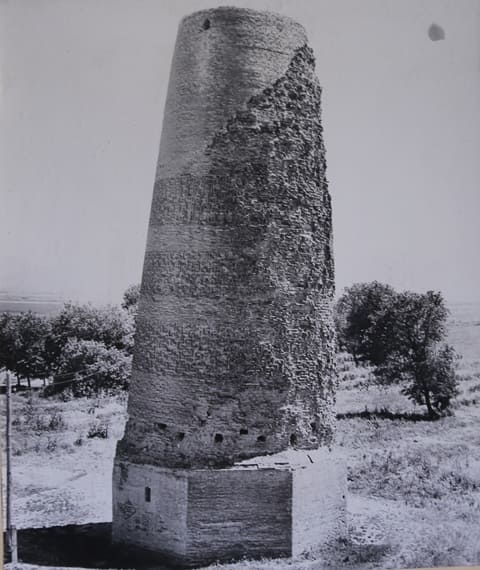
Zasypkin B.P. in his unpublished manuscript made an analysis of the constructive techniques of erecting the minaret, the artistic data of the ornamental masonry of the conical trunk of the minaret and the general appearance of the monument.
Archaeologist D.F. Vinnik put a lot of work into studying the Burana settlement and the minaret itself. Based on the results of the discovery of three more architectural monuments after archaeological excavations around the Burana minaret, he concludes that their construction time is the Xth - XIIth centuries.
D.F. Vinnik gave an explanation for the absence of bricks from the upper part of the minaret during excavations, which fell during an earthquake. During the survey of modern estates around the ancient settlement, he recorded numerous facts of the use of burnt bricks of the Burana minaret in foundations, walls, fences, cladding of platforms, laying out stoves by the residents of the estates.
In 1960, for the first time since the conservation of 1927, a project for the repair, conservation and partial restoration of the Burana minaret was developed by the State Design Institute "Kirgizgiprostroy". The author of the project was the architect V.E. Nusov.
Project provided for following types of work of Burana Minaret:
- filling a crack with ganch mortar over an area of 8.0 square meters;
- filling breaks and destruction with the production of complex figured masonry on the conical trunk of the minaret with ancient brick on ganch mortar;
- dismantling and new laying of complex figured masonry on the base of the minaret from ancient brick on ganch mortar with a volume of 36 cubic meters;
- pointing of seams with ganch mortar with the addition of 0.5% silicate (liquid glass);
- laying out the steps of the internal spiral staircase from ancient brick "on the edge" on ganch mortar;
- making a protective layer of the upper platform of the minaret from ganch with the addition of 0.5% silicate solution (liquid glass) and 5% brick flour on an area of 30 square meters.
From June to September 1960, only part of the planned work was completed. The following and subsequent years, work was stopped until 1974, when large-scale work on scientific research and restoration of the Burana minaret began. In 1970 - 1974, according to the project of B.V. Pomaskina, special scientific restoration workshops of the Ministry of Culture of the Kyrgyz SSR for the first time carried out a scientifically based restoration of the Burana tower on the basis of methodically agreed restoration solutions.
Over the five years of work, a large volume of scientific and design documentation and restoration work on the minaret was completed. The octagonal base of the minaret was completely restored to replace the previous repair bookmarks. When restoring the ornamental masonry of the base's faces, its original sections were preserved.
The restored ornament is documented by available photographs and drawings from previous years. The destroyed sections of the square were completely restored from restoration bricks podium of the octagonal base. Individual blocks of the marble base of the minaret podium were replaced.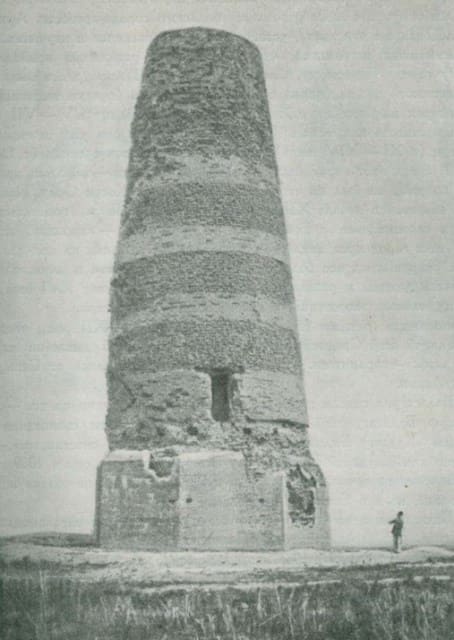
The ornamental masonry of the belts of the conical shaft of the minaret was completely restored in the destroyed places along the entire height of the tower. An observation deck with a water drain was made at the top of the minaret. The internal spiral staircase was also repaired with the replacement of the destroyed ancient bricks with new restoration bricks.
To lift visitors to the upper observation deck, a new metal staircase was installed to the entrance to the minaret at a height of 5 meters. However, despite the large volume of restoration work, seismic strengthening measures for the minaret were not provided for on the monument.
During these same years, in parallel with the restoration studies, new archaeological studies were carried out on the settlement and excavations in the immediate vicinity of the minaret. The work was carried out by an archaeological team of the Institute of History of the Kirghiz SSR under the leadership of D. F. Vinnik.
As a result of these archaeological excavations, the depth of the tower's foundation was established, the remains of four religious buildings, a bathhouse, residential premises, water supply routes, etc. were discovered. The research of 1970-1974 determined the time period of the city's existence to be from the Xth to the XIVth centuries.
Based on the research and restoration work carried out during this period, as well as taking into account the great scientific, historical, educational and cultural value of the discovered monuments, in 1976 the Council of Ministers of the Kyrgyz Republic decided to create the Republican Archaeological and Architectural Open-Air Museum on the basis of the Burana settlement.
The territory of the museum consists of the central ruins of the settlement with an area of 36 hectares, and its central monument is the Burana Tower. This decision became the main event in the protection and use of the Burana settlement and minaret. In 2016, as part of the celebration of the 1000th anniversary of the native of the city of Balasagyn, Zhusup Balasagyn, partial restoration work was carried out on the Burana Minaret.
The destroyed bricks of the podium cladding of the minaret were replaced with subsequent installation of an insulating coating. Partial restoration of the observation deck of the minaret was done. However, these works are temporary and urgent in nature due to the anniversary events.
The minaret requires in-depth research in order to preserve its status as a World Heritage Site. In 2016, a monograph entitled "Architecture of Central Asia in the Karakhanid Era" was published in Ankara, in which the architecture of the Burana Minaret is considered in the area of Central Asia, and its significance and place in the art and architecture of the Islamic world are discussed.
The Burana Minaret, the construction of which is considered to be dated to the XIth century, is one of the first structures of this type in Central Asia. It is assumed that the mosque for which this minaret was built was located on the western side of the Burana tower.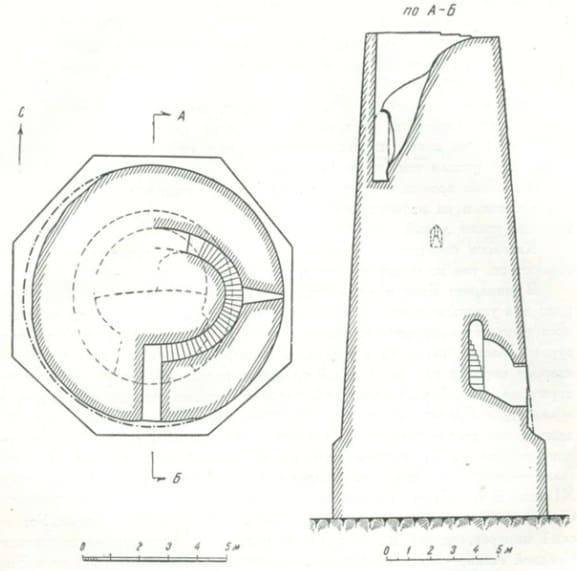
The original height of the Burana minaret was 44.5 meters. Like other minarets of the Karakhanid era, its top was crowned with a lantern dome with eight window openings for the azanchi, which called believers to prayer five times a day. Now the height of the tower is 24.6 meters, the rest of it collapsed during one of the strong earthquakes that occurred in the XVth or XVIth centuries.
The functioning of the Republican open-air archaeological and architectural museum "Buran Tower" created conditions for the preservation of the most valuable monument of medieval architecture of Kyrgyzstan, as well as its use together with other archaeological sites in cultural events and tourism.
Every day the tourist attractiveness of the open-air museum and the Burana minaret is growing, which is visited not only by residents of Kyrgyzstan, but also by many countries of the world. However, much work remains to be done to create the appropriate infrastructure for an open-air museum.
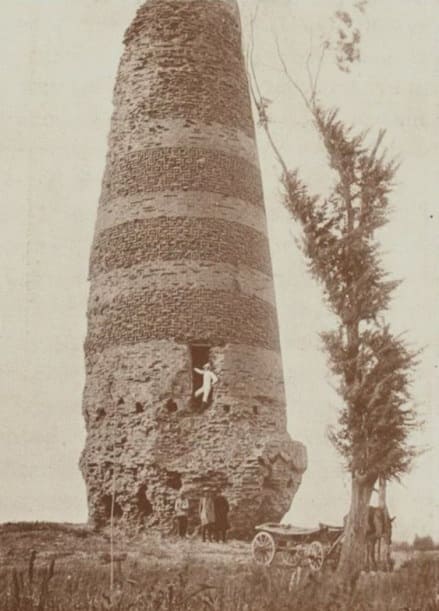
Authority:
"Museology, conservation and restoration of historical and cultural sites". He Feng Kyrgyz State University of Civil Engineering, Transport and Architecture named after N. Isanov, Bishkek, Kyrgyz Republic, 61799147@qq.com
Dzhumadel Dzhumabaevich Imankulov Research and Design Institute NIPI Kyrgyzrestoration of the Ministry of Culture, Information, Sports and Youth Policy of the Kyrgyz Republic, Bishkek, Kyrgyz Republic, iman_jum@mail.ru
https://cyberleninka.ru/article/n/minaret-burana-izuchenie-v-proshlom-i-nastoyaschem/viewer





